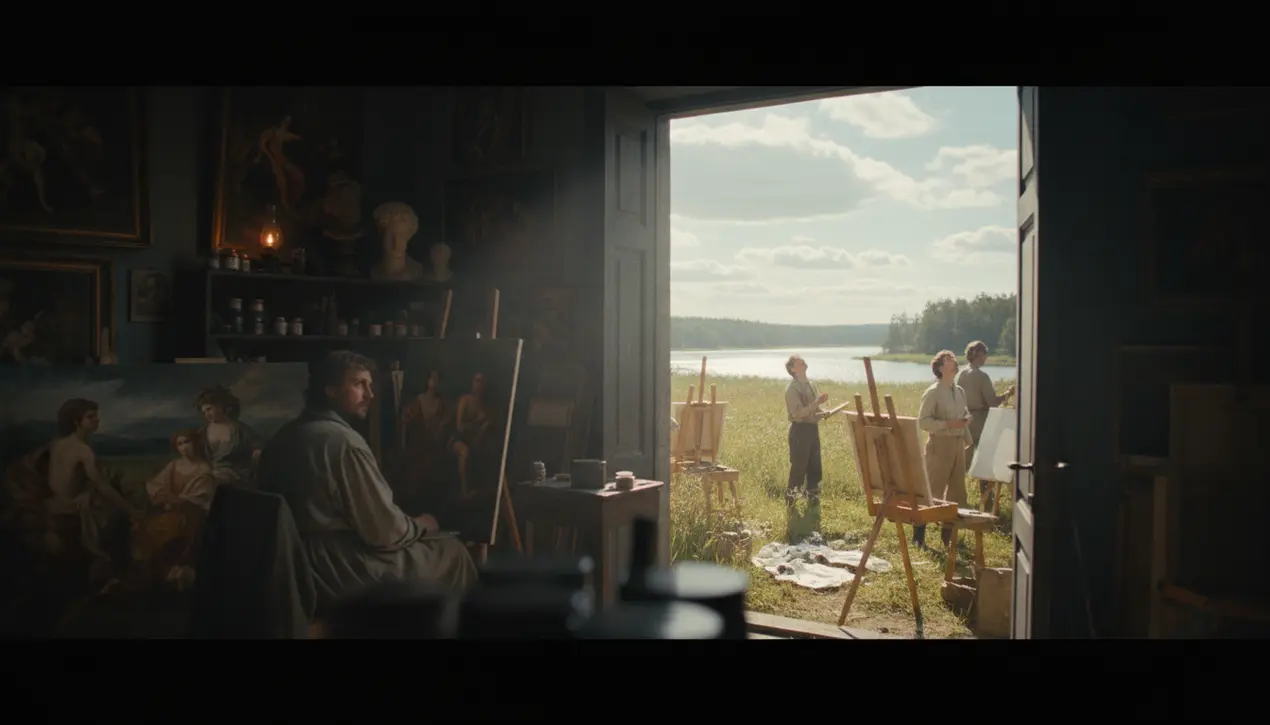
Entertainmenttheatre & artsArt Exhibitions
Radical Origins of Plein Air Painting Explained.
AM
Amanda Lewis
6 hours ago7 min read
To truly grasp the radical nature of plein air painting, one must first understand the suffocating orthodoxy of the 19th-century studio, a place where history paintings of mythological scenes reigned supreme and the air was thick with the smell of linseed oil and academic tradition. The move outdoors wasn't merely a change of scenery; it was a revolutionary act, a deliberate snub to the establishment embodied by the French Academy, which dictated everything from subject matter to finish.The pioneers of this movement—artists like Jean-Baptiste-Camille Corot and, most famously, the Impressionists—were essentially trading the controlled, artificial light of the atelier for the chaotic, ephemeral brilliance of the sun. This was a seismic shift in methodology.It demanded a new speed and a new language of brushwork; you couldn't labor for weeks over a single leaf when the shadow you were painting was vanishing before your eyes. They traded elaborate preparatory sketches for direct, immediate application of paint, capturing not a static, idealized world but a fleeting moment—a specific quality of light on a haystack, the shimmering reflection on the surface of a pond.This was the birth of modern painting's obsession with perception itself. The very tools of their trade had to evolve alongside their vision.The invention of portable easels and, crucially, the availability of paint in portable tin tubes, a innovation often credited to John Goffe Rand, were as vital to this revolution as any artistic manifesto. Without this newfound mobility, Monet could not have set up his easel before the facade of Rouen Cathedral at different times of day, and Renoir’s dappled luncheon parties would have remained confined to memory.The criticism they faced was ferocious; the term 'Impressionist' itself was initially a derisive label slapped on them for what critics saw as unfinished, slapdash work. They were mocked for their compositions, which often seemed casually cropped, influenced by the new technology of photography, and for their bright, seemingly unnatural palettes.But this was the point. They were painting the truth of their optical experience, not the manufactured truth of the studio.The legacy of this radical departure is imprinted on every subsequent art movement, from the Fauvists who took their color freedoms even further to the Abstract Expressionists who embraced the raw, physical act of painting itself. Plein air was the crack in the dam of academic art, and the torrent of modernism that followed forever changed the landscape of what art could be.
#plein air painting
#art history
#outdoor painting
#art techniques
#featured
#Claude Monet
#Impressionism
#radical art movements
Stay Informed. Act Smarter.
Get weekly highlights, major headlines, and expert insights — then put your knowledge to work in our live prediction markets.
Comments
Loading comments...
© 2025 Outpoll Service LTD. All rights reserved.